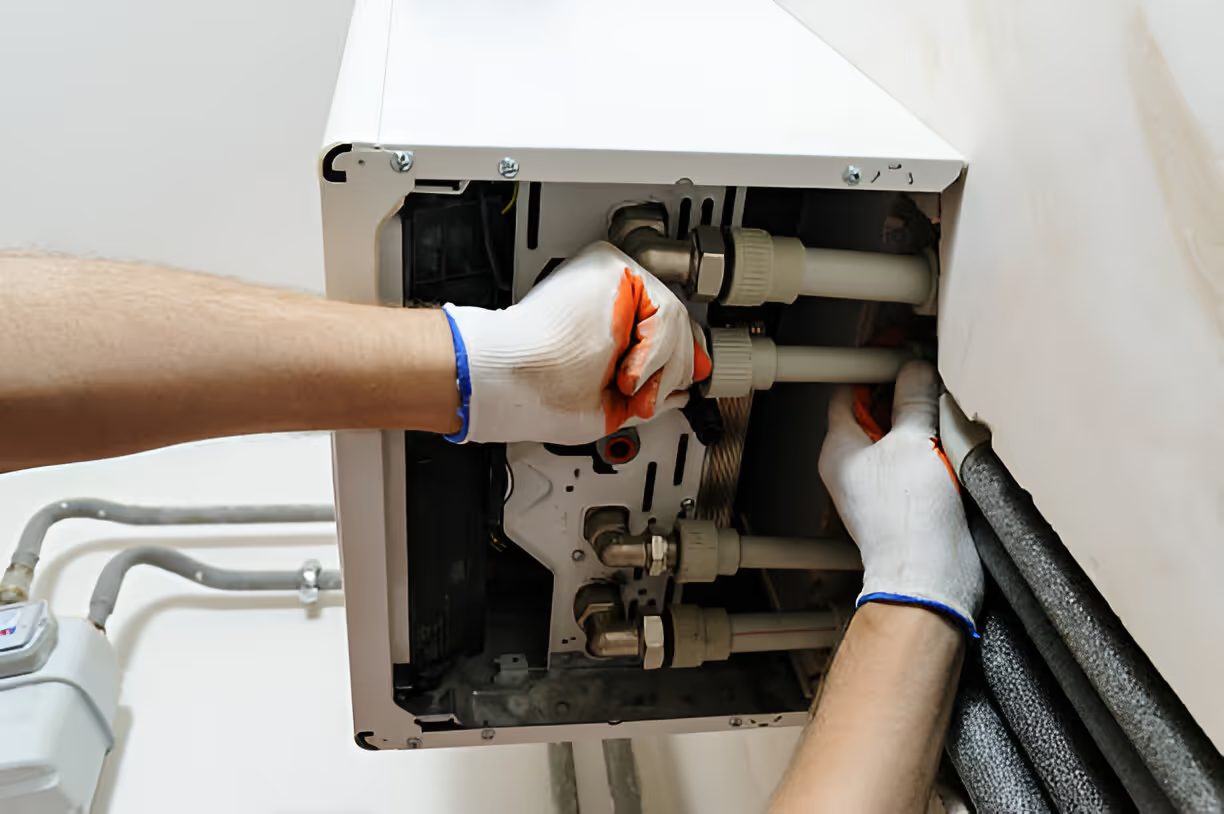Emergency Furnace Repair in Rio Verde, AZ
When your furnace fails in Rio Verde, AZ, it can be more than an inconvenience — it can be a safety risk. Whether winter nights dip into the 30s, dust and desert debris clog burners after a storm, or older gas systems develop leaks, 24/7 emergency furnace repair in Rio Verde, AZ means fast, expert response focused on safety, containment, and restoring reliable heat.

Why immediate action matters
A malfunctioning furnace can cause:
- Loss of heat and comfort for vulnerable household members
- Increased risk of carbon monoxide exposure from cracked heat exchangers or incomplete combustion
- Fire hazards from electrical faults, overheating components, or dusty burners
- Escalating repair costs when minor problems are left to worsen
In Rio Verde’s desert environment, dust, sand, and large temperature swings can accelerate component wear and clog filters and burners. Prompt, professional attention reduces safety risks and limits damage.
Common urgent symptoms (what qualifies as an emergency)
Watch for these signs and treat them seriously:
- No heat at all during cold evenings despite your thermostat being set correctly
- Strong or unusual furnace odors (rotten-egg gas smell indicates a gas leak; do not stay inside)
- Carbon monoxide alarm activation or physical symptoms like headache, nausea, dizziness
- Loud or unusual noises: banging, popping, grinding, or continuous rattling
- Visible yellow or irregular burner flame instead of steady blue flame
- Frequent tripping of breakers or furnace short-cycling (turning on and off rapidly)
- Thermostat unresponsive or display errors
- Flames or smoke visible near the unit
Any sign of a natural gas odor or carbon monoxide alarm should be treated as an immediate life-safety emergency.
Immediate safety and containment steps you can take
If you suspect a gas leak or CO exposure:
- Evacuate everyone from the home immediately, including pets.
- Avoid operating electrical switches, phones, or anything that could spark.
- From a safe location, call emergency services (911) and follow instructions.
If there is no gas odor or CO alarm but your furnace isn’t working:
- Check and reset the furnace breaker and thermostat settings.
- Inspect and replace a visibly dirty air filter if you can do so safely.
- Ensure vents and returns are not blocked.
- If the furnace is making violent noises or showing electrical arcing, turn the unit off at the breaker and keep occupants away until a technician arrives.
Do not attempt complex repairs (relighting burners, removing panels to access controls, or bypassing safety devices) — these can create hazards or mask the root problem.
What a 24/7 emergency diagnostic looks like
A trained technician follows a disciplined process to diagnose and secure your system:
- Rapid safety assessment on arrival: verify CO levels, check for gas odors, and evaluate immediate hazards.
- Visual inspection: examine burners, flame color, venting, heat exchanger, wiring, and controls.
- Electrical and combustion tests: measure electrical continuity, voltage, and combustion efficiency where applicable.
- Component checks: test ignition system (pilot, electronic igniter), gas valve operation, blower motor, limit switches, capacitors, and control boards.
- Containment and mitigation: if a cracked heat exchanger, gas leak, or dangerous condition is confirmed, the unit is shut down and the gas is secured to protect occupants.
- Repair plan and explanation: the technician explains findings, immediate containment steps taken, and options for temporary fixes or permanent repair/replacement.
Temporary fixes vs permanent repairs
Temporary measures can restore safe heat quickly but are not long-term solutions. Examples:
Temporary (short-term, safety-first)
- Resetting breakers and control systems
- Replacing a clogged filter to improve airflow
- Cleaning burners or flame sensors to restore ignition
- Securing or shutting off gas supply if a minor leak is isolated and safe to do
- Providing recommendations for temporary space heating if the furnace must remain offline (with safety guidance)
Permanent solutions address root cause and restore long-term safety and performance:
- Replacing a cracked or corroded heat exchanger (required if CO risk is present)
- Replacing failed gas valves, ignition modules, or control boards
- Repairing or replacing blower motors, belts, and damaged duct components
- Replacing the furnace when age, recurring failures, or repair costs exceed reasonable thresholds
- Repairing or reworking venting and combustion air pathways for safe operation
Technicians prioritize safety and compliance with local code; permanent repairs often include testing to verify safe combustion and cleared venting.
What to expect when you request emergency service
When you request emergency furnace repair you can expect:
- 24/7 dispatch capability and prioritized scheduling for urgent calls
- A short pre-arrival intake to capture symptoms, system type (gas/electric/propane), and any known safety concerns
- Prompt arrival of a certified HVAC technician carrying diagnostic equipment and common emergency parts
- A safety-first approach: immediate mitigation, followed by diagnostic testing and clear explanation of repair options
- Documentation of findings and recommendations for long-term care
Preventing future emergencies — maintenance and local tips for Rio Verde homes
Routine care reduces emergency risk:
- Annual heating tune-up before cold weather: combustion testing, heat exchanger inspection, burner cleaning, and system safety tests
- Replace or clean filters monthly to avoid airflow restrictions, especially after dust storms and during monsoon season when yard and road dust increase
- Install and test carbon monoxide detectors on each level and near sleeping areas; replace batteries regularly
- Keep furnace area and vents clear of clutter, insulation, or landscaping overgrowth
- For older homes or systems over 15 years, schedule a professional evaluation to weigh repair vs replacement based on efficiency and safety
- If your home uses propane, verify tank and line condition annually
Prompt response to warning signs preserves safety, saves money, and prevents longer outages. In Rio Verde, where desert dust and seasonal swings challenge system components, vigilance and professional emergency response capability are essential to keeping your home safe and comfortable.






